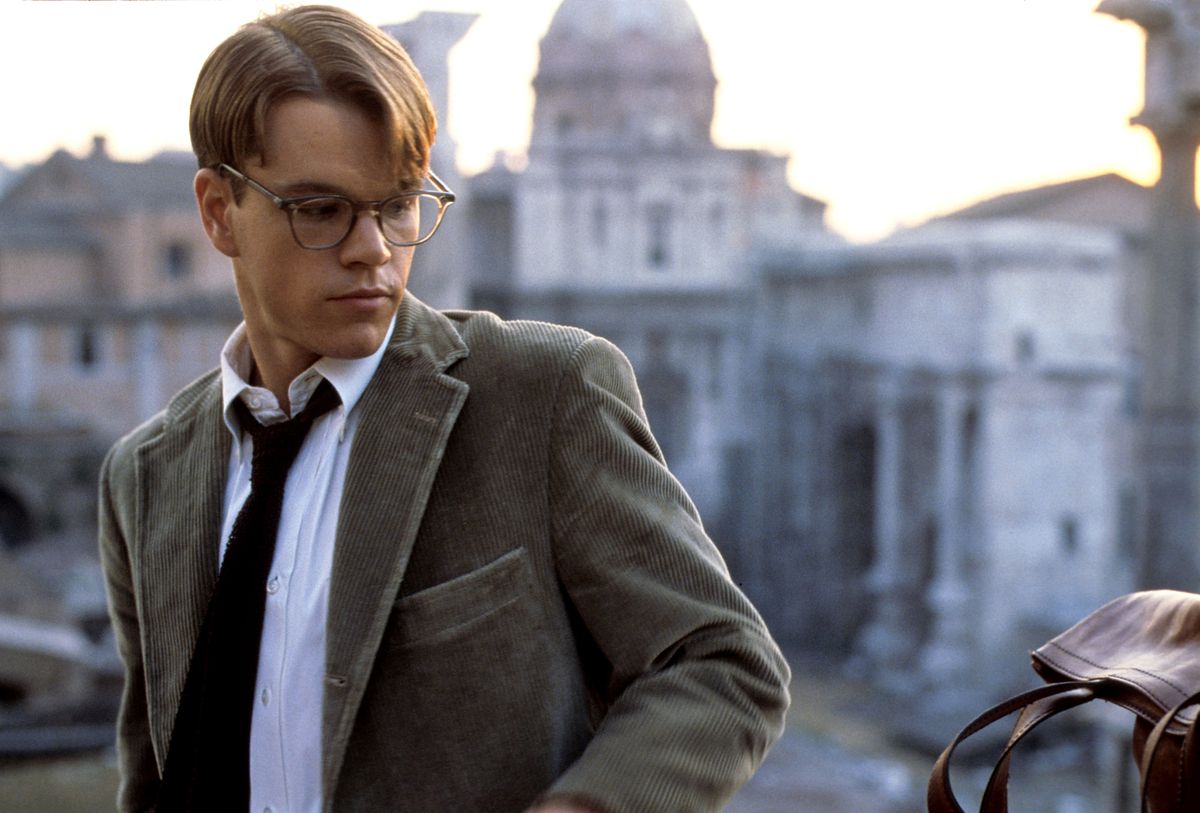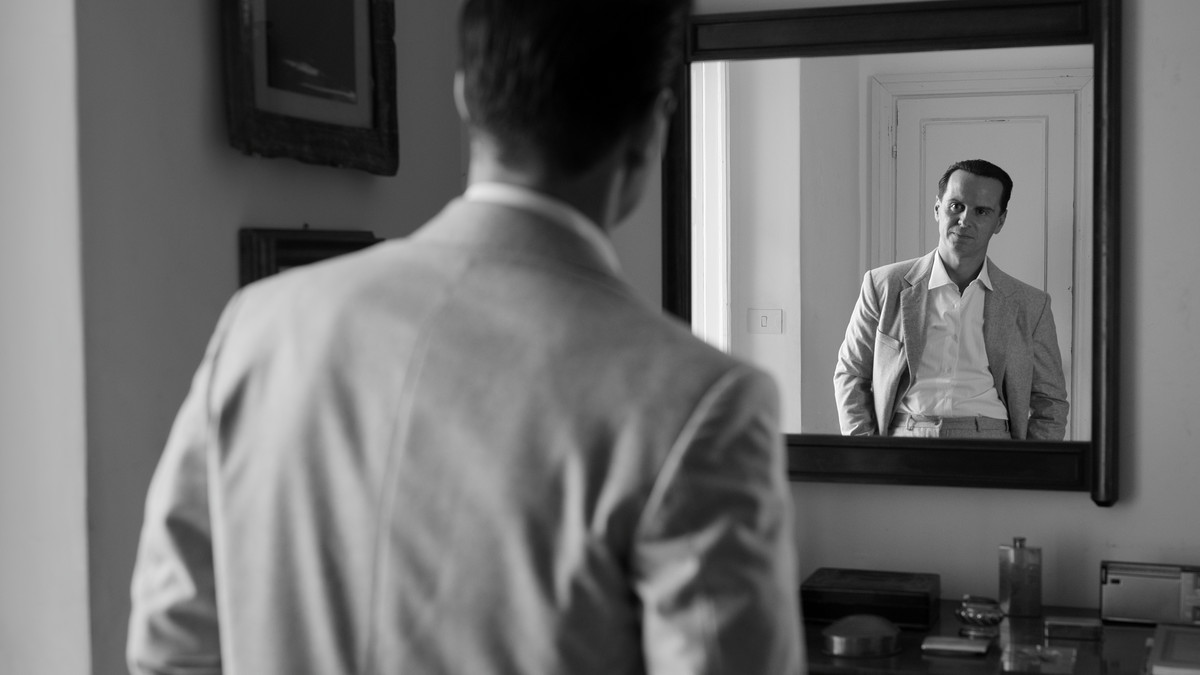Netflix’s Ripley haunts a beloved film like a shadow
Just because a film is iconic and beloved doesn’t mean it shouldn’t be remade, especially if it’s itself based on another work. This also applies to the 1999 thriller The talented Mr. Ripley as it would be with anything else. Anthony Minghella took great liberties in his adaptation of Patricia Highsmith’s 1955 crime novel – itself a genre-defining classic – about a young con man who first infiltrates and then cannibalizes the life of a wealthy American playboy while living a carefree existence on the Italian coast . There is room for a different take on accessing other parts of Highsmith’s book than Minghella did, especially in the more expansive medium of an eight-part miniseries.
But something went wrong Ripley, a spare, black-and-white retelling of the story starring Andrew Scott, written and directed by acclaimed screenwriter Steven Zaillian, now streaming on Netflix. Zaillian (who wrote Schindler’s Listamong many other great films, and wrote and directed the gripping HBO miniseries The Night Of) clearly tries to be more faithful to Highsmith’s sour, misanthropic, internalized tone than Minghella’s busier and melodramatic film. But strange casting decisions, overly fussy direction, and inert performances ruin any chance it might have had to worm its way into everyone’s imagination. He’s a nice guy.
In the story, Tom Ripley is a clever con man living a squalid life in New York when he is recruited by wealthy shipmaker Herbert Greenleaf to travel to Italy. Greenleaf wants Ripley to convince his son Dickie to stop wasting money and time studying painting and return home to the family business. Dickie is only a vague acquaintance of Ripley’s, but Ripley hungrily jumps at the opportunity to live a different life. Once in Italy, he becomes obsessed with Dickie, a dissolute golden boy, and clings to him and his privileged existence like a sea slug. When Dickie’s girlfriend Marge becomes suspicious and Ripley feels his new life is threatened, things take a dark turn.
Image: Netflix
Casting Andrew Scott as Tom Ripley is a brilliant idea on paper. Ripley is one of literature’s greatest sociopaths: an outwardly charming, morally empty shape-shifter with a talent for mimicry and an insatiable appetite for the experiences of others. In roles like Flea bag‘s hot priest, Sherlock‘s Moriarty, and the lonely writer of All of us strangersScott has a way of being warm and distant at the same time, his mischievous charisma and sensuality on display but kept at bay by an inner safety lock. That works for Ripley, whose opportunism and manipulation are all about faking an inner life he knows he doesn’t really have.
Highsmith wrote five Ripley novels covering more than thirty years in the life of her famous antihero. Scott, who is 47, would have been perfect in an adaptation of Ripley’s game or Ripley underground, when the character is in his late 30s and his conniving, murderous ways have hardened. But the casting of Zaillian in a version of the first book is completely baffling. In The talented Mr. Ripley the character is around 25, and the aimless formlessness of that age is central to his motivation, to the crucial missteps he makes, and to Dickie and Marge’s naive acceptance of him. Scott is far too weathered and refined to be believable as a young warrior, and Ripley’s emptiness comes across as too transparent and creepy.
It’s unthinkable that anyone would be carried away by him – especially not the cautious, studiously bored version of Dickie, played by Johnny Flynn, or Dakota Fanning’s coolly intellectual Marge. These versions of these three characters have no natural rapport at all, which isn’t helped by the actors’ flat affect or Zaillian’s painfully slow, methodical direction. This airless, alienating three-hander plays out in the first episodes of the series. Ripley was filmed on location in Italy by the great cameraman Robert Elswit (There will be blood), but without any visual storytelling imagination on Zaillian’s part, Elswit’s beautifully framed monochrome images on a postcard feel cold and calculated. The scenes are also largely empty of people, giving the whole thing a cold, spooky, out-of-season feel.

Image: Miramax/Everett Collection

It is a far cry from the urgent sense of life in Minghella’s film. In addition to the colorful, vibrant Mediterranean scenes, that film was powered by the megawatt charisma of Jude Law and Gwyneth Paltrow as Dickie and Marge, and for that matter the role of Ripley drew Matt Damon into a thrilling exploration of his full range as an actor (arguably fuller than most of his roles since). Damon’s Ripley is at once empathetic, bumbling, tense and chillingly distant, playing the pasty outsider who laughs as effectively as he shows the aching emptiness at the character’s heart. The world of the film is glamorous, alluring and vibrant, lit in rich afternoon hues and scored by cool jazz; something Ripley is drawn to, rather than a void that reflects him.
Minghella stirs all of this into a rich psychodrama, adding his own storylines and characters (like Cate Blanchett’s Meredith) to give Ripley more resilience, and leaning heavily on a homoerotic interpretation of the Ripley/Dickie dynamic. That’s controversial among some Highsmith fans who don’t find it in the book, although it’s fair to say that an unconscious, dark sexuality is never far from the surface of her work. In turn, Zaillian downplays this strange subtext, but doesn’t ignore it completely.
While Minghella’s film loses some steam once Dickie is out of the picture and Ripley moves to Rome and assumes his identity, Ripley actually improves a bit at this point. Zaillian’s stylistic approach works better for the detailed, grimly comic procedural that follows as Ripley tries to cover his tracks, plays games with the police and confronts Dickie’s friend Freddie. A few episodes are devoted almost entirely to near-silent murder scenes that showcase a tense black humor that’s strangely absent when the characters are talking. That said, Freddie, played odiously by an unforgettable Philip Seymour Hoffman in the film, was always going to be a difficult role to fill; the nicest thing you can say about the casting of Eliot Sumner (a musician and actor, and child of Sting) in the role is that it’s a wild swing and a miss for everyone involved.
Ripley ultimately cannot escape a feeling of numb, drawn-out emptiness. Perhaps that should be a reflection on Tom Ripley himself, but the purity of intention doesn’t make an eight-hour character study of a man with no character a good idea or a fun watch. And while Highsmith purists may think so Ripley corrects what they see as the film’s transgressions, there’s no doubt that Damon has dug far deeper into the subtleties and contradictions of her creation than an abused Scott does here. There have been many more Ripleys – including Alain Delon, Barry Pepper, Dennis Hopper and John Malkovich, who has a brief cameo here – and there will likely be many more. Over a riveting few hours, Minghella and Damon managed to nail this elusive character. But he gains the upper hand over Zaillian and Scott and escapes into the shadows again.
Ripley is now streaming on Netflix.
